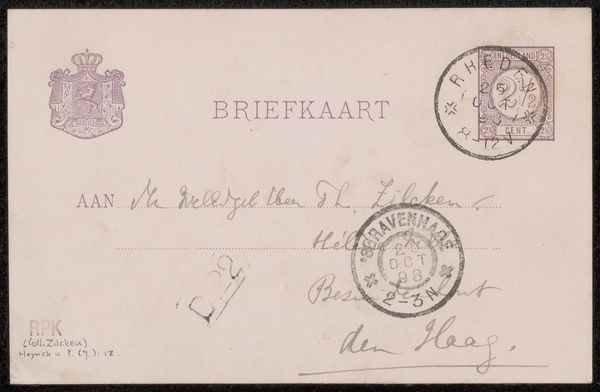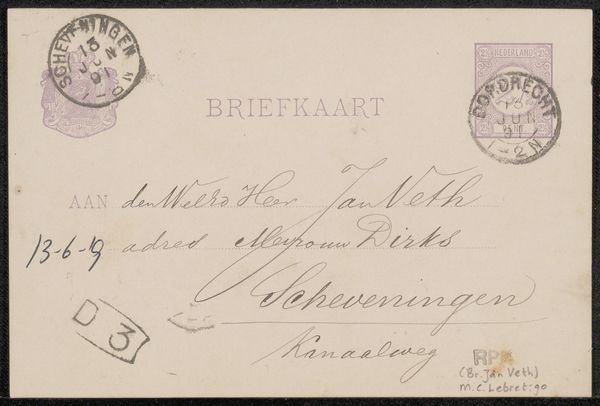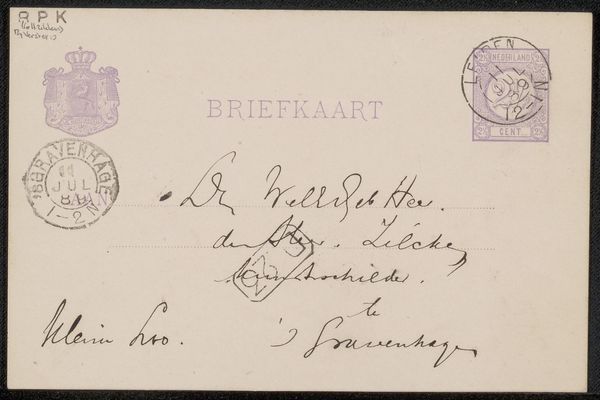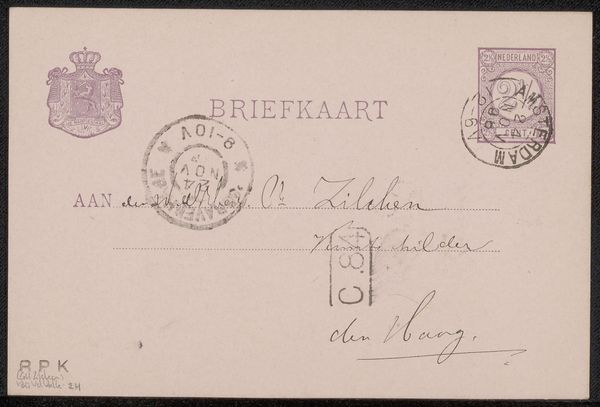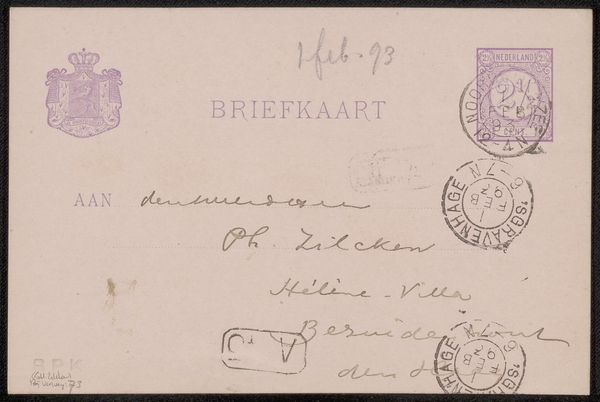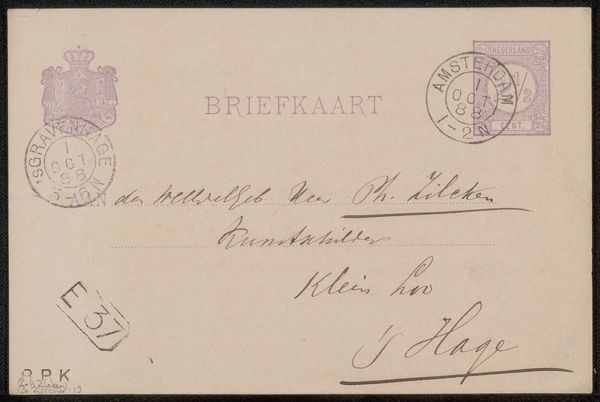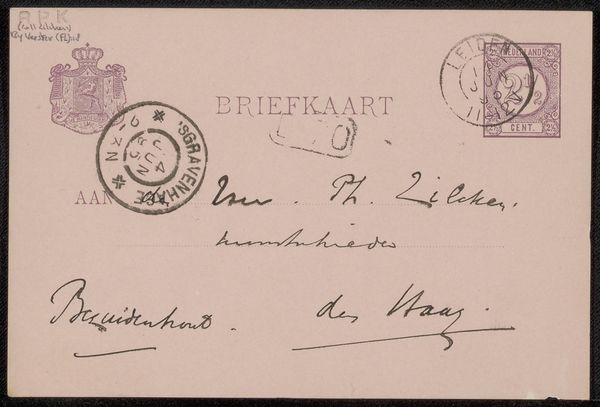
drawing, print, paper, ink, pen
#
drawing
# print
#
pen sketch
#
paper
#
ink
#
pen
#
post-impressionism
Copyright: Rijks Museum: Open Domain
Editor: So, here we have Albert Verwey's "Briefkaart aan Philip Zilcken," dating back to before 1892. It’s a simple postcard, ink on paper, and categorized as both a drawing and a print. My initial impression is of intimacy, of a fleeting, personal message frozen in time. The faded ink and smudged postmarks feel almost like whispers from the past. What speaks to you when you look at this, perhaps? Curator: It’s funny, isn't it, how such a humble object can hold so much... atmosphere? To me, it feels like glimpsing a moment snatched from the busy lives of these two fin-de-siècle intellectuals. What I notice, perhaps because I'm a romantic at heart, is the handwriting itself. You see how the strokes dance and hesitate? Do you see how Verwey almost seems to *press* the ink into the fibers? It feels... intentional, even loving. We tend to forget how much personality was embedded in handwriting before keyboards and Times New Roman took over. Editor: That’s a really interesting point. I was focused on the overall effect of the faded text, but looking closely, there *is* a distinct personality in the script. Almost a hurried elegance. Curator: Exactly! Now, imagine receiving this. It's not just the *content* of the message, but the weight of the paper, the scent of the ink, the tangible connection to the sender. Does it make you think differently about how we communicate today? Editor: It definitely does. There's a lack of tangible connection. This gives so much insight on personality. Now I will think twice about everything handwritten that comes across. Curator: Precisely. And that, my friend, is why these seemingly minor artifacts can offer us such profound insights. I think what struck me most of all about the piece is the personal element shining through. Editor: I think so, too. It's certainly shifted my perspective. Thanks so much for helping me look at it in new way.
Comments
No comments
Be the first to comment and join the conversation on the ultimate creative platform.


